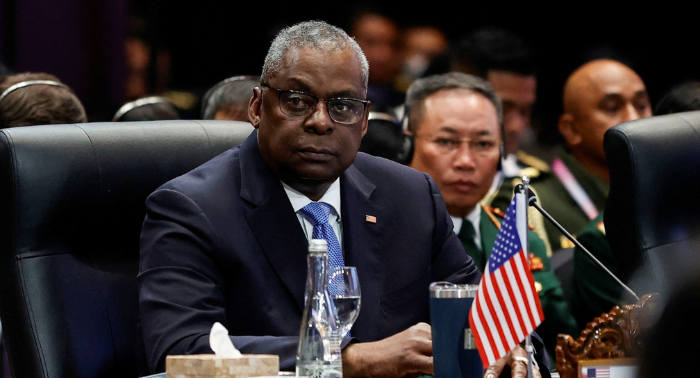In a significant development, U.S. Defense Secretary Lloyd Austin visited Kyiv unexpectedly on Monday, emphasizing the United States’ commitment to continue supporting Ukraine with financial and military aid. This visit occurs amidst the escalating global tensions due to the Israel-Hamas conflict, which has strained U.S. and international resources.
Traveling from Poland by train, Austin’s agenda included meetings with Ukrainian President Volodymyr Zelenskyy, Defense Minister Rustem Umerov, and Chief of Staff Gen. Valery Zaluzhny. U.S. officials have indicated that Austin’s visit aims to reassure Ukraine of unwavering American support, despite the global focus shifting to the Middle East and growing weariness over the nearly 21-month-long war.
In a statement, Austin affirmed the U.S.’s solidarity with Ukraine, saying, “The United States will continue to stand with Ukraine in their fight for freedom against Russia’s aggression, both now and into the future.” He posted this message on X, previously known as Twitter.
This trip marks Austin’s second visit to Kyiv. His first visit in April 2022, just two months into Russia’s full-scale invasion, was a time when Ukraine was buoyed by global indignation against Moscow. Austin spearheaded an international initiative that now includes 50 countries, meeting monthly to discuss weapons, training, and other support for Ukraine.
However, the situation in Gaza, with ongoing attacks by Hamas on Israel and subsequent Israeli bombardments that have resulted in over 10,000 civilian deaths, could potentially divert attention and resources from Ukraine. The U.S. has been actively engaged in preventing these attacks from escalating into a broader regional conflict.
The U.S. military has deployed significant resources to the Middle East, including two carrier strike groups, numerous fighter jets, and thousands of personnel. They have also had to adjust their force posture and carry out airstrikes against Iranian-backed militants in Iraq and Syria.
To date, Ukraine has received substantial aid from the U.S. and its allies, totaling more than $44 billion from the U.S. and over $35 billion from other countries. This aid includes a wide range of weapons, from millions of bullets to advanced air defense systems, tanks, and commitments for F-16 fighter jets.
Despite this support, Ukraine’s needs continue to grow. Some European countries, like Poland, have reduced their support, citing the need to preserve their own defensive capabilities.
Ukrainian officials have contested the notion of a stalemate with Russia, with Andriy Yermak, head of the president’s office, confirming recent advancements in the conflict during his visit to Washington last week.
As winter approaches, the challenges for both sides to make significant gains increase, potentially affecting U.S. congressional support for further aid to Ukraine.
Fred Kagan, a senior scholar at the American Enterprise Institute, warned against the cessation of aid to Ukraine, stating that it is crucial in preventing Russian advances.
Additionally, the Pentagon faces budgetary constraints, with limited funds remaining this year for Ukrainian aid. The Pentagon can provide approximately $5 billion more from its stocks but has only about $1 billion to replenish these resources. Consequently, recent announcements of military support have been smaller in scale.
Pentagon deputy press secretary Sabrina Singh highlighted the necessity to ration resources due to uncertainty over congressional action on a supplemental spending package for Ukraine.
Efforts to secure additional funding from Congress have been complicated by political disagreements, with some Senate Republicans demanding support for unrelated measures, such as stricter immigration policies and increased border control funding. The recent stopgap spending bill, aimed at preventing a government shutdown, did not include provisions for Ukrainian aid.




